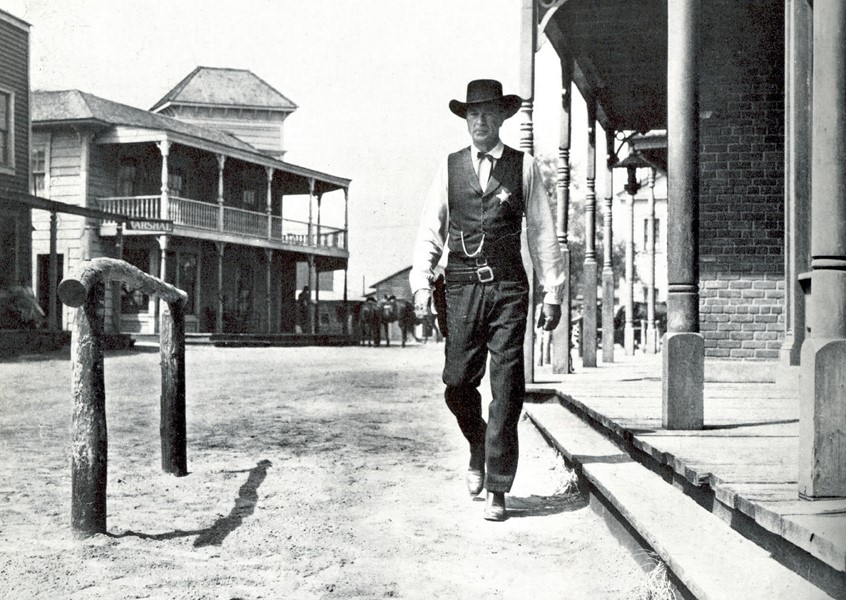Silver screen-influenced men’s style can almost be split into two eras: pre and post-Gary Cooper. Previous to Cooper becoming part of Hollywood’s golden age in the mid 1920s, film stars were not only seen as American aristocracy but dressed the part
Silver screen-influenced men’s style can almost be split into two eras: pre and post-Gary Cooper. Previous to Cooper becoming part of Hollywood’s golden age in the mid 1920s, film stars were not only seen as American aristocracy but dressed the part too – tuxedos, top hats and canes were not uncommon on celluloid but hardly an accurate depiction of the American man.
Decked out in down-to-earth workwear, and with an everyman likeability and small-town wisdom, Cooper didn’t conform. Roles such as the a simple-hearted Vermont tuba player in Mr Deed Goes To Town (1936) and his Oscar-winning performance as rogue western marshal Will Kane in High Noon (1952) portrayed him as plainspoken yet captivating – the ideal unpretentious vision of the early 20th century frontier man as seen through Hollywood’s gilded lens.
"Decked out in down-to-earth workwear, and with an everyman likeability and small-town wisdom, Cooper didn’t conform"
Born Frank James Cooper in 1901 in the mid-western town of Helena Montana, ranches, cowboys and pioneer spirit were commonplace. It was here that Cooper developed a love, and an eye, for humble US workwear and early denim – a world away from Tinsletown’s look of the day. These rugged roots would form solid foundations for Cooper’s style, which was then cultivated when he went to school in England as a teen – the required impeccable school uniform impacting deeply on his sartorial psyche, polishing it.
Perhaps owing to earthy roots in middle America, Cooper was abashed about his natural flair for style that shone not only with the ease he carried off his costumes in his films but in the love of colour, authenticity and craftsmanship evident in his own wardrobe. He once told a magazine that he did, “not know a darn thing about dressing” but a new book, Gary Cooper: Enduring Style, reveals that the actor in fact had a tailor in a major city in almost every country, which included London’s Saville Row.
It’s the typically stoic masculine ‘don’t talk about it, just do it’ approach to style that has cemented Cooper in fashion history; his accessible dash is carried off with an ethereal film-star grace, whether he is swathed in rugged, rough-around-the-edges cowboy threads or refined tailoring.
Designer Bill Blass captured Cooper’s je ne sais quoi when he said, “Believe me, he was the best looking son of a bitch who ever lived. He had the greatest sense of style. More than anyone, Cooper was responsible for fusing the essentially formless but wearable aesthetic of the American West with the narrow, formal silhouette of European design. That set him apart from the Gables and Grants. That gave him American icon status. You see, it was no accident that Cooper looked as terrific as he did. He was the first to buy jeans and do the stone washing thing. He’d beat them on a rock and leave them out in the sun all day. Did it himself, too.”
Gary Cooper: Enduring Style, by G. Bruce Boyer and Maria Cooper Janis is published by powerHouse Books and features intimate photographs of the screen legend along with a foreword by Ralph Lauren and an essay by the authors.
Text by Laura Havlin
